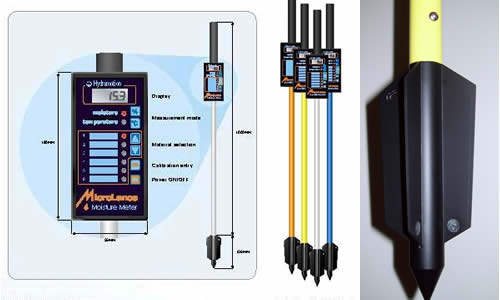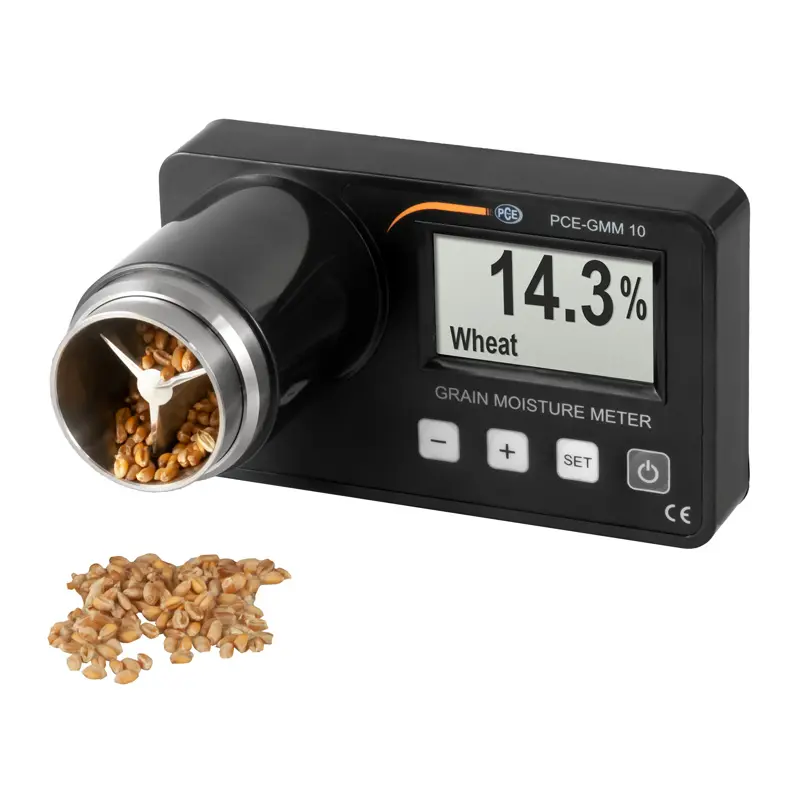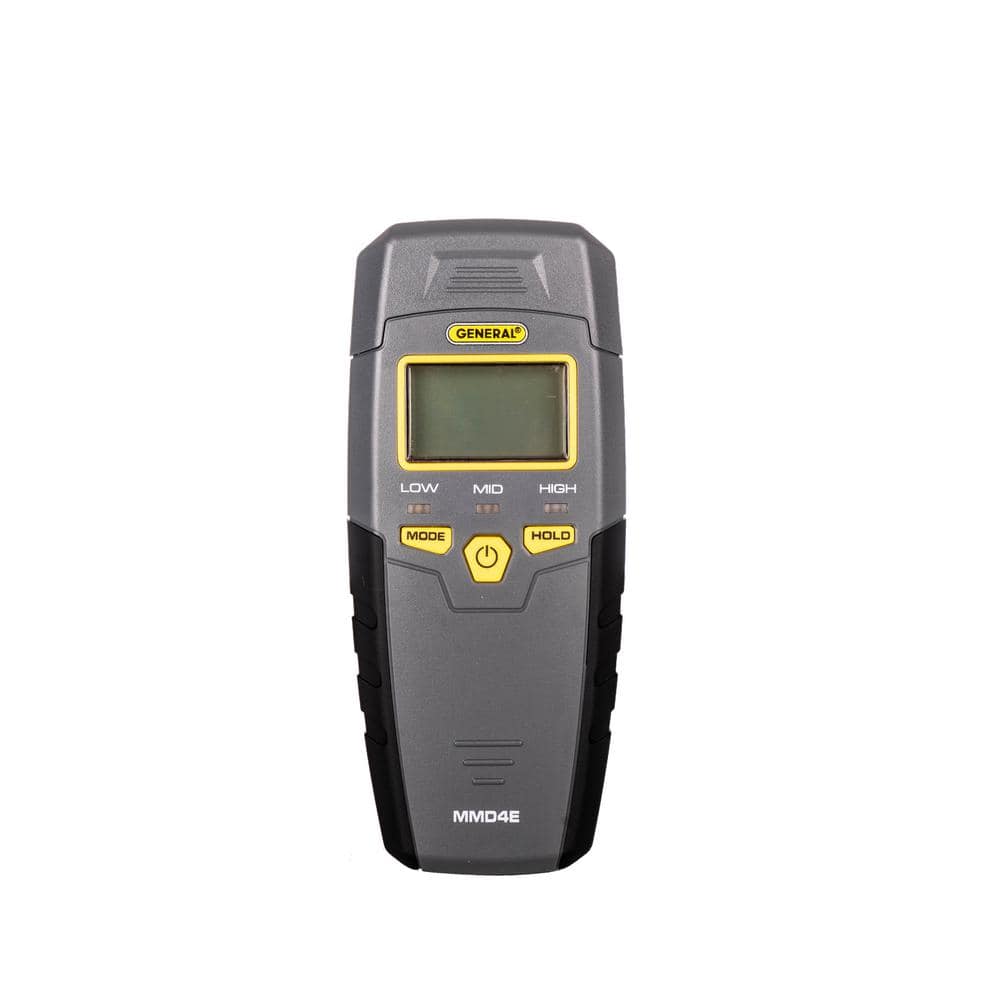The Ultimate Guide to Choosing the Right Moisture Meter for Your Requirements
The Ultimate Guide to Choosing the Right Moisture Meter for Your Requirements
Blog Article
Recognizing the Relevance of a Moisture Meter in Avoiding Mold and Water Damages in Your Home
In the realm of home maintenance, the presence of dampness can frequently be a quiet yet powerful opponent, capable of triggering prevalent mold development and dangerous water damage if left uncontrolled. Understanding the relevance of a moisture meter in this battle is not simply a choice however a critical requirement.
Significance of Moisture Discovery
Efficient dampness discovery approaches are vital for safeguarding properties and preventing possible mold development and water damages. Wetness can permeate into various building products, resulting in structural problems and carcinogen. By utilizing a wetness meter, home proprietors can proactively determine areas vulnerable to excess moisture, enabling for timely intervention and reduction strategies.
Moisture meters provide exact readings of moisture levels in different materials such as concrete, drywall, and wood. This data assists in pinpointing areas of issue, also in hard-to-reach or concealed locations. Early discovery of wetness accumulation makes it possible for timely fixings or changes to protect against additional damages.

Exactly How Moisture Meters Job
Wetness meters play a critical duty in the positive identification of excess wetness, aiding in the avoidance of prospective mold and mildew growth and water damage by supplying accurate analyses of moisture levels in numerous building products. These devices function based on different concepts, depending upon their kind. Moisture Meter. Pin-type moisture meters, for example, have two pins that pass through the material to determine the electric resistance between them. When wetness exists, it improves the product's conductivity, leading to a reduced resistance analysis. Pinless moisture meters, on the various other hand, usage electromagnetic sensing units to check the material without triggering damages. These sensing units emit electromagnetic signals that penetrate the product and determine the dielectric properties, suggesting dampness content. Some advanced wetness meters pin both combine and pinless technologies for detailed moisture detection. Comprehending just how moisture meters feature is important for precise and prompt moisture level evaluations, allowing reliable safety nets against mold and water damage.
Detecting Early Caution Indicators
Upon preliminary inspection of a property, identifying refined indications of excess moisture becomes essential in the very early detection of possible mold growth and water damage. Some typical early warning indicators include musty smells, water spots on ceilings or wall surfaces, peeling paint or wallpaper, and deformed or tarnished surfaces. Stuffy odors frequently show the existence of mold or mold, even if no noticeable indications appear. Water discolorations can indicate leaks or seepage, while peeling off paint or wallpaper may be an outcome of wetness compromising the attachment of these materials to the surface area. Warped or tarnished surfaces, such as distorting floorboards or discolored drywall, are clear indicators of water damage. Furthermore, an increase in allergic reaction symptoms or breathing issues among occupants might suggest the existence of mold as a result of excess moisture. By without delay determining and addressing these early indication, house owners can mitigate the danger of considerable mold growth and water damages in their homes.
Avoiding Mold Growth
Recognizing very early caution indicators of excess wetness within a residential property not just allows prompt website here discovery of prospective mold growth and water damages however also works as an aggressive procedure in protecting against the spreading of mold. To effectively prevent mold and mildew growth, it is crucial to resolve any type of sources of dampness immediately. This can include dealing with leakages in windows, roof coverings, or pipes, making certain appropriate ventilation in moist locations like kitchen areas and bathrooms, and making use of dehumidifiers in high-humidity spaces. Regularly maintaining the residential property and inspecting's pipes, roof covering, and gutters can likewise help in stopping water breach that could cause mold and mildew growth.
Checking wetness levels in locations vulnerable to moisture, such as basements and creep areas, using a dampness meter can likewise aid in very early discovery of elevated dampness levels and potential mold and mildew growth - Moisture Meter. By taking proactive procedures to stop excess wetness and mold and mildew development, homeowners can guard their residential property and indoor air top quality.
Benefits of Normal Tracking
Normal surveillance of dampness degrees in a home can play a critical duty in maintaining a healthy and balanced indoor environment and preventing potential mold and water damage. By routinely inspecting wetness levels, property owners can discover any type of issues quickly and take required actions to avoid mold growth and water damages.
In addition, routine monitoring enables homeowners to track patterns and fads in moisture degrees over time. Ultimately, the regular monitoring of dampness levels equips homeowners to secure their residential or commercial property, guard their health, and maintain the integrity of their interior setting.

Verdict

By utilizing a moisture meter, home owners can proactively determine areas prone to excess moisture, allowing for timely treatment and reduction approaches.

Monitoring dampness degrees in locations susceptible to moisture, such as basements and crawl spaces, making use of a dampness meter can additionally help in early detection of raised dampness levels and potential mold and mildew development. (Moisture Meter)
Report this page